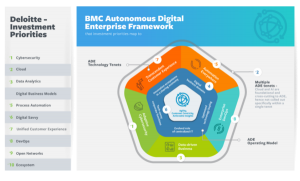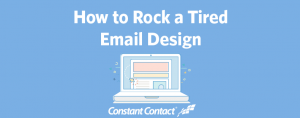We hear this all the time; this is the new norm. This year has indeed been a year of change, and some of these changes will stay with us while some won’t, hopefully. But what does all of this talk about change really mean for your company and your marketing strategy? From a marketing perspective, what’s changed, and what of those changes will stick?
Rather than just talking about marketing changes in a nebulous context, we thought it would be interesting to dig into this concept of marketing change from a more detailed perspective.
Consumer-based companies (B2C, non-profits, etc.) have indeed been facing challenges from several directions. It’s tough to get customers into your stores, your customers aren’t consuming information the same as they did before, and it seems harder and harder to please them.
Here are a few ways to use marketing to help your business or organization stay in touch with your customer and continue to keep them engaged with your brand.
Protect Your Brand Reputation
The examples of brands behaving badly during this pandemic are all around us; hand sanitizer selling for $ 49.95, a single zip-lock bag selling for $ 10.00, and there was a drug store in NY selling packs of 20 face masks for $ 200!
People will remember the companies that tried to exploit the situation.
Get Serious About Digital
As part of your overall marketing strategy, Digital is no longer a “nice to have.” We’ve been talking about this for quite some time, but now the very existence of your company or organization could depend on it.
According to the CMO Survey, 85% of marketers report an increased openness among their customers to their digital offerings! Also, 84% believe that their customers place more value on their digital experience with a brand.
So, here’s demonstrable evidence that digital must be a part of your marketing effort, but what does that mean, specifically? Unfortunately, there is no one-size-fits-all answer to that. It depends on who your customer is. Where they are online. And, most importantly, what their buying journey looks like.
There are, however, some rules of thumb that you can use for planning out your strategy. In the discovery and evaluation stages of the customer’s journey, typically, search engines, social media, video, and your website are popular channels to attract customers.
As they move toward the decision stage of their journey, the touchpoints that impact are often email, social media, and your website.
Take Customer Service Digital
Here’s a question for you. During this pandemic, if you have altered your regular business hours or the days of the week that you are open, have you updated your Google local listing to reflect that change?
Think about that for just a second. If your customer checks out your local listing and it shows that you are open from 9-5. They’ll assume that to be correct. They’ll make the drive to your store only to find it closed, creating a bad brand experience.
The second element of customer service in the days of Covid is the weight that it can place on you and your staff. Suppose you’re like many businesses and organizations today. In that case, you are most likely working with a limited team, making it harder to take care of customer phone calls and emails in a timely manner.
Chatbots are quickly becoming a very popular piece of technology that can take a load off your plate, especially for dealing with common questions or situations. And we know that customers are exceptionally open to using this technology.
Remember: “63% of customers will leave a company after just one poor experience, and almost two-thirds (66%) will no longer wait more than 2 minutes for assistance.” ~Forrester
Is Your Website Ready
As Digital becomes a larger role in your marketing strategy, it’s critical that your website is up-to-date to handle the increasing demands placed on it.
Being optimized for search is undoubtedly one of the foundational blocks that every website should be ready for. However, with the increasing focus on customer experience, your website also has to be optimized for visitor conversions.
A website conversion happens when someone that comes to your site does something that moves them positively further down their buying journey. The most prevalent conversion that people think about is the filling out of a contact us form. This is, in-fact a conversion, and a very important one.
However, many conversions that should be happening on your website much earlier in the customer’s buying journey.
Think about it this way. Before the virus and the lock-downs. If a person came to your business with a problem or a need, you had the opportunity to have a 1-on-1 conversation with that person. You could ask questions to get more information about their situation. You’d take that information and provide insights to solutions that might fit their needs, and then quite often; you’d make the sale.
Today, you often don’t have the luxury of that 1-on-1 conversation. Because of that, you have to have answers to all of the questions that your customers might have on your website. And, you have to have it on your website in a manner that they are comfortable.
Conclusion
We hope that this provides insights into how the marketing world is changing and some thoughts on how you can get your business or organization to take advantage of digital opportunities.
Business & Finance Articles on Business 2 Community(41)







